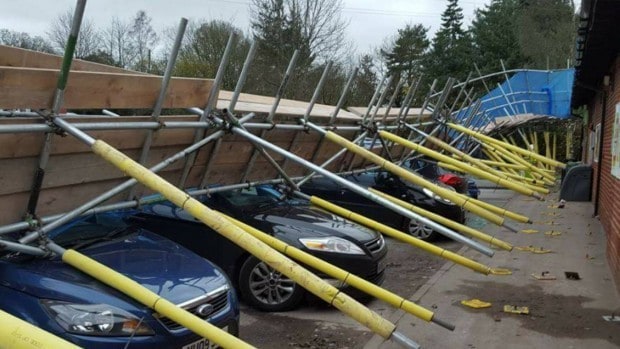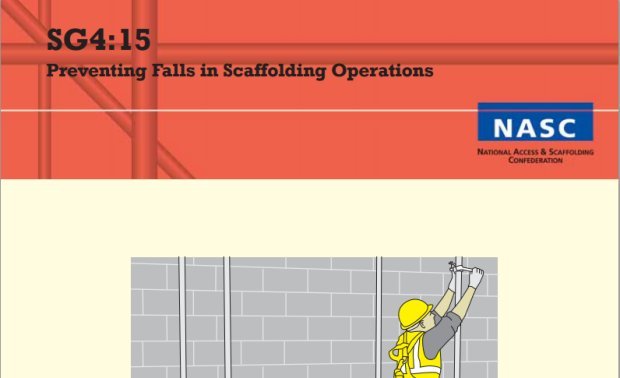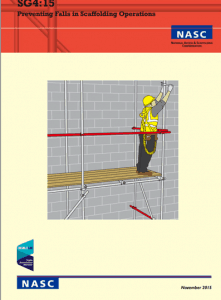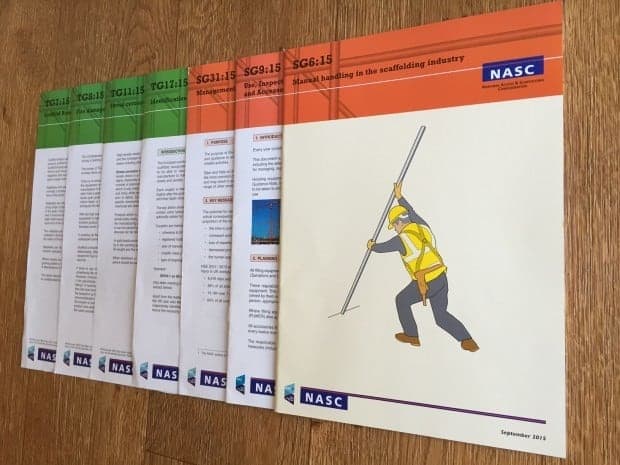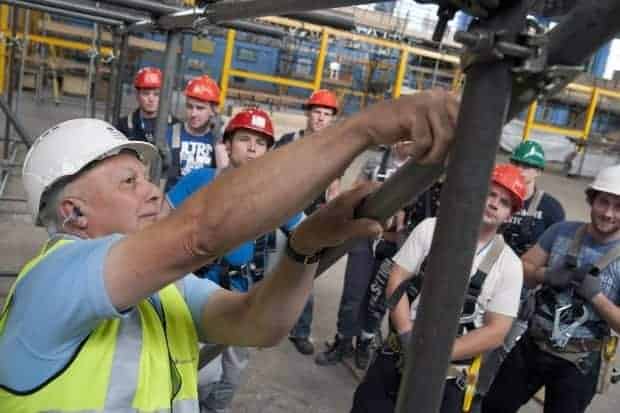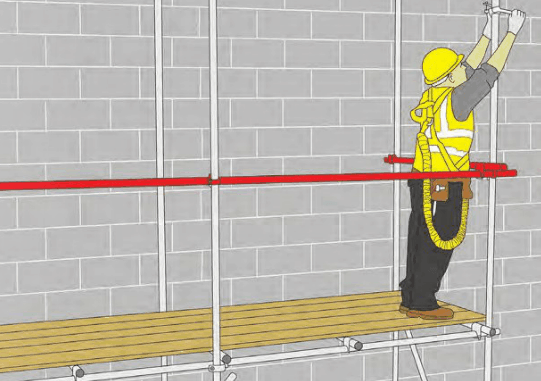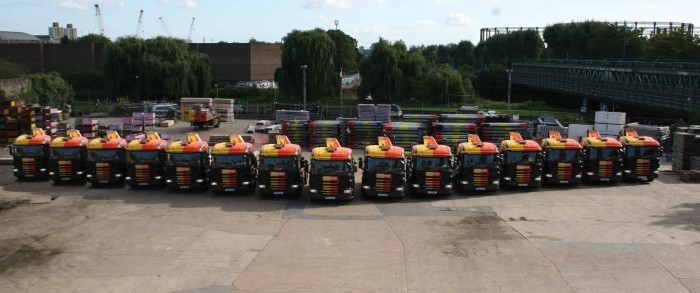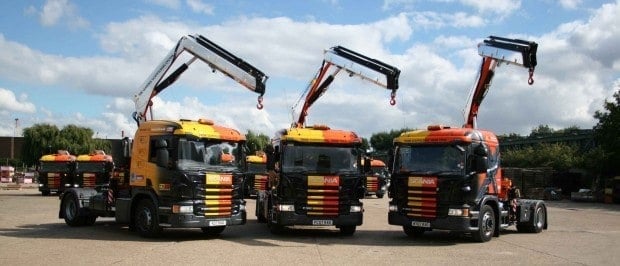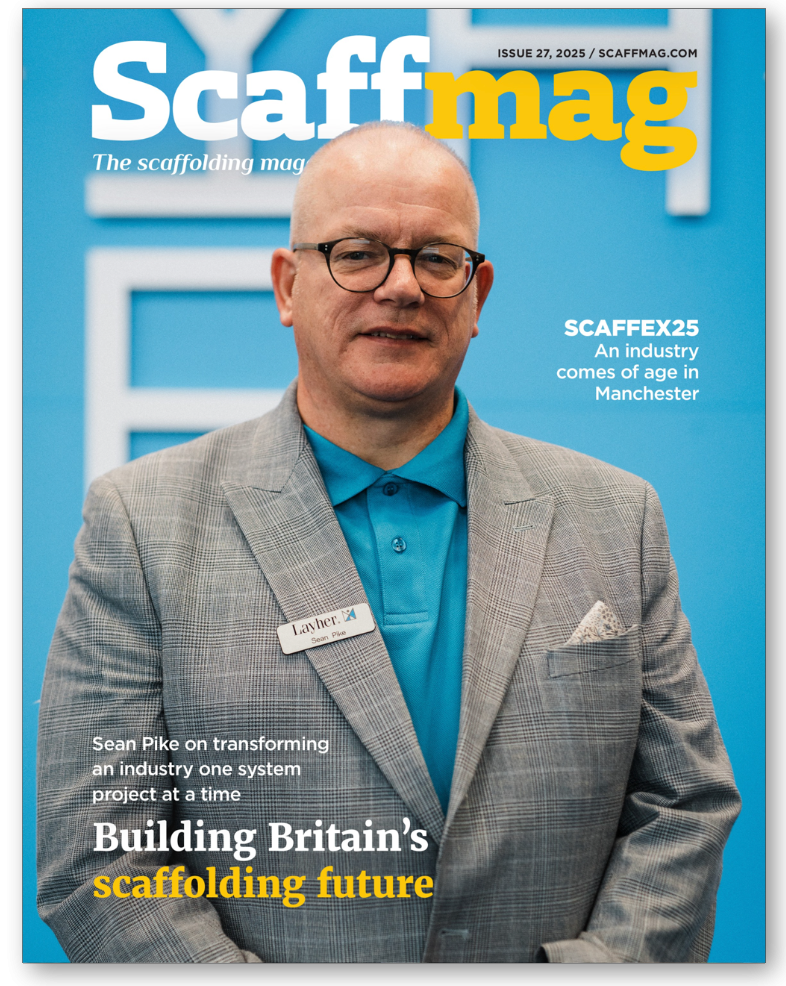Wind brings down scaffolding onto parked cars
High winds are thought to of caused a 40-meter run of scaffolding to topple onto parked cars in North Staffordshire.
SIX vehicles are thought to have been damaged after scaffolding tumbled onto them yesterday morning. The incident in Loggerheads occurred as North Staffordshire continues to be battered by high winds. Firefighters were called out to Co-op on Eccleshall Road at about 9.40am following reports of a 40-metre long scaffold falling down. The crews noted that it had fallen on six vehicles parked close to the shop. It was dismantled and the area was made safe. They left the scene just after 2pm.NASC Launches SG4:15
At a packed AGM in Leeds the NASC last night launched eagerly awaited SG4:15 ‘Preventing Falls in Scaffolding Operations’ guidance.
As previously mentioned, many of the principles of SG4 remain unchanged in this update, however SG4:15 provides more guidance on systems of work and available equipment to help comply. SG4:15 also contains several new areas of guidance that have been included to reflect the availability of new innovations and changes to recognised ‘good practice’
The new additions include guidance on:
- Chimney scaffolds
- Bridging with beams
- Floor height lifts
- Cantilever scaffolds
- New PFPE (Personal Fall Protection Equipment)
- Loading bay gate installation
Scaffolder is prosecuted after Roofer falls to his death
A Castleford scaffolder has been prosecuted after a worker fell to his death from a roof.
Walter Booth (trading as WB Roofing) was carrying out repairs to the roof of Micklegate Methodist Church, Pontefract on 3 September 2012. A Health and Safety Executive (HSE) investigation found the scaffolding edge protection provided by Mr Wayne Morgan (trading as Barnsdale Scaffolding) failed to follow the profile of the roof edge leaving a gap through which 63 year old Mr Booth fell. Wayne Morgan of Barnsdale Estate, Cutsyke, Castleford, pleaded guilty to breaching Regulation 8(a) of the Work at Height Regulations 2005, and was sentenced to 200 hours unpaid work and ordered to pay £15,000 in costs by Wakefield Magistrates Court. After the hearing, HSE inspector Sarah Lee commented: “This was an entirely preventable death. In this case the scaffolding edge protection was not sufficient to prevent a person falling from the roof. The scaffold installation should have been erected correctly, follow the profile of the roof and have no large gaps. The standards for scaffold are well known and have been in place for many years. It is vital that scaffolders ensure that scaffold is erected as per the standards and it is checked after it is erected, to ensure that everything is in place.”NASC publishes updated guidance notes
The NASC has released a raft of seven revised and updated Technical Guidance (TG) and Safety Guidance (SG).
The revisions come as part of the NASC’s on-going commitment to refresh published technical and safety guidance on a five year cycle. NASC members have already received copies of seven guidance notes in the post during November 2015 these will also be available to full members via download, free of charge, via the NASC website. A full list of the updated guidance and what’s included as follows:- SG6:15 – Manual Handling in the Scaffolding Industry: A well-established document that remains robust and valid (date changes only).
- SG9:15 – Use, Inspection & Maintenance of Lifting Equipment and Accessories for Lifting in Scaffolding: A complete review with new visuals.
- SG31:15 – Management of Slips and Trips: Significant changes including added images.
- TG7:15 – Scaffold Board Nailplates: Date changes only.
- TG8:15 – Fire Damage: Cost of fire damage evaluation does not warrant recovery of metal components.
- TG11:15 – Stress Corrosion Cracking in High Tensile and Alloy Steels: Minor amendments only including change of date.
- TG17:15 – Identification of EN74-1 Couplers: Date changes only.
CITB funds Aberdeen academy to build new £500,000 scaffolding training centre
ASET Training Academy has been announced as the preferred bidder to develop a new £500,000 scaffolding training centre in the North East of Scotland, with the Construction Industry Training Board (CITB) jointly funded facility set to open in September 2016.
CITB is commissioning the facility due to increasing demand for scaffolders and insufficient training in the region. With £300,000 in funding towards building the facility, CITB will invest a further £200,000 on training over the first three years of operation. CITB will now work with ASET Training Academy – a part of North East Scotland College – on the details of the initiative, ahead of a deal potentially being signed early in 2016. Alex Birks, Head of Strategic Training Provision at CITB, said: “ASET Training Academy has a strong track record in providing high quality training, which is why we are delighted to have moved a step closer to building this new and much needed facility. “There is growing demand for scaffolding courses in the North East of Scotland, so this will ensure world-class training courses will be brought to where they are needed most.” Atholl Menzies, Chief Executive at ASET, responded: “My fellow Directors and I from both the ASET Training Academy and North East Scotland College are delighted to have been selected for this contract”.Scaffolder receives life-changing injuries after 9m fall
A bristol based scaffold firm has been fined after a scaffolder was seriously injured after falling nine metres.
Bristol Magistrates Court heard how on 23 July 2013 an employee of Tubular Access Scaffolds Limited was dismantling a scaffold structure when he fell, causing life-changing head injuries. An investigation by the Health and Safety Executive (HSE) into the incident, which occurred at Berkley Crescent, Clifton, found that there was no evidence of preventative measures taken by the company before the incident. Tubular Access Scaffolds Limited, of Duckmoor Road, Ashton, was fined a total of £26,250, after pleading guilty to offences under the Work at Height Regulations 2005. Speaking after the hearing Health and Safety Executive principal inspector Helena Tinton said: “If the company had managed a safe system of work with properly trained and equipped scaffolders, then the employee would not have suffered such terrible injuries.”Video: Scaffolding Training in 1969
A video has emerged showing how scaffolders were being trained in 1969.
British pathe has published a very interesting snapshot video of scaffolders being trained at the old CITB scaffold training center in Mitchem, London. Well before harnesses and the conception of SG4 & TG20, the video profoundly highlights how far our great industry has progressed to become a world leader in scaffolding training and safety. The video also shows Big Ben and parts of Westminster covered in scaffolding. Old school scaffolders, we salut you. Let us know your thoughts in the comments below.SG4:15 – Preventing falls in Scaffolding Operations announced
The NASC have announced the latest edition of the safety guidance SG4 – Preventing falls in Scaffolding Operations.
For almost 20 years and 200,000 copies later the popular guidance notes SG4 continues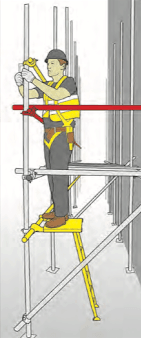 to be revised and developed for the better, which has now become the established minimum standard for fall prevention in the scaffolding industry today.
With a new title ‘SG4:15 – Preventing falls in Scaffolding Operations’ is described in the new NASC Yearbook 2016 as “evolution not revolution” it continues to focus on the current preventative and protective measures that are classed as good practice, like for instance, creating the ‘Scaffolders Safe Zone’.
Many of the principles of SG4 remain unchanged in this update, however SG4:15 provides more guidance on systems of work and available equipment to help comply, also a wider selection of methods for a contractor to consider for creating the ‘Scaffolders Safe Zone’
Overall SG4:15 reflects the focus of the guidance to protect scaffolders working at height during erection, alteration and dismantling procedures.
The latest edition of the guidance will be launched later this month at the NASC AGM in Leeds on 27 November.
to be revised and developed for the better, which has now become the established minimum standard for fall prevention in the scaffolding industry today.
With a new title ‘SG4:15 – Preventing falls in Scaffolding Operations’ is described in the new NASC Yearbook 2016 as “evolution not revolution” it continues to focus on the current preventative and protective measures that are classed as good practice, like for instance, creating the ‘Scaffolders Safe Zone’.
Many of the principles of SG4 remain unchanged in this update, however SG4:15 provides more guidance on systems of work and available equipment to help comply, also a wider selection of methods for a contractor to consider for creating the ‘Scaffolders Safe Zone’
Overall SG4:15 reflects the focus of the guidance to protect scaffolders working at height during erection, alteration and dismantling procedures.
The latest edition of the guidance will be launched later this month at the NASC AGM in Leeds on 27 November.
TRAD Group – Going for Growth
New TRAD Commercial Vehicle Fleet – Protecting People and the Environment and enhancing service levels.
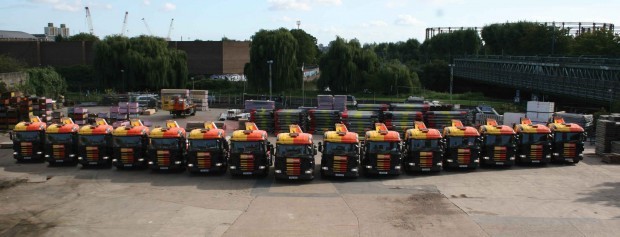
TRAD is proud to announce the completed purchase of 15 new Scania HGV units complete with 1.5 Ton Fassi Cranes at a cost of £1.7 million. These modern high quality vehicles are fully Euro 6 compliant helping us to protect the environment by reducing emissions, particularly in London where TRAD Co mainly operates, this is part of our continuous drive to reduce our carbon footprint and improve our Environmental Management System accredited through BSI to ISO 14001.
Moreover, as part of our continuing focus on improving safety for our Employees and the General Public, all 15 vehicles have been fitted with top of the range cameras. These enhancements help protect Cyclists and Pedestrians by substantially reducing blind spots in the Driver’s field of sight. TRAD currently holds Bronze FORS Accreditation and this purchase of the new Scania HGV units solidifies our commitment to achieving the FORS Silver standard early next year.
Furthermore, these new Lorry Loader Cranes enable a much safer working environment with a major advancement in remote controlled Lifting Operations. All TRAD’s HGV drivers have received certificated Training, allowing them to control every aspect of the lifting process from any position around the truck, thus resulting in increased visibility of all operations improving safety and enabling us to give a better quality service to our customers.
New Trucks – New Livery
The new trucks have been liveried with distinctive new paintwork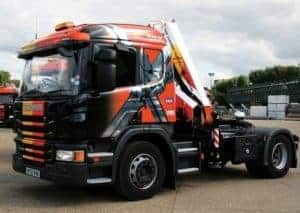
The trucks have been transformed into a highly effective form of mobile messaging, promoting continual awareness of our Behavioral Management Programme ‘Play it Safe’ as well as promoting both the TRAD Group and ALTRAD Group Brands.

